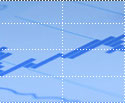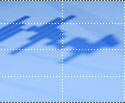|
|
|||||||
|
|
|||||||
 |
|
||||||
|
WHAT THE MARKET WANTS: Dec. 2008
Selling Pressure Continues December 1, 2008 5:30 PM The market extended its year-long slide in November with another steady dose of selling pressure prior to Thanksgiving. After a strong Thanksgiving week rally that lifted the indices off their worst levels of the month (and off 10-year lows for the S&P 500), the market reverted back to its old ways with a huge sell-off on December 1 on news that the economy has been in recession since December 2007. Many expected stocks to recover in November, after October's historic plunge and due to the market's propensity for year-end rallies. But uncertainty surrounding the economy continues to plague the market even as President-Elect Barack Obama's administration prepares to unleash a suite of initiatives in an attempt to revive the ailing economy. Investors simply aren't buying stocks or the idea that there's much the next President can do to stop the bleeding and a prolonged recession. And the worst for the economy may still lie ahead. There appears to be a growing sense that there are no quick fixes for what ails the global economies. The housing bubble was years in the making, so it's likely the recovery will be years in the making. The economy will just have to work its way through the excesses of the last decade. For the month, the Nasdaq composite was down 10.8%, worst among the major indices. The DJIA (-5.3% in November) continues to suffer the least, and is down 23.5% over the last three months compared to the Nasdaq's 35.1% slide. All of the indices we track have plummeted at least 30% year-to-date, and several are down more than 40% for 2008. Looking at the various market caps, performance deteriorated as you moved down the cap spectrum, with the Russell Microcap Index down 13.6% compared to the Russell 1000 large-cap index that was down 7.9%. Value showed a slight edge over growth but nothing to draw any conclusions from, as the selling was broad-based and indiscriminate. The fact is that although fear remains high, it is far from the panic that is common during capitulation -- and market bottoms. We don't necessarily think that the market is vulnerable to a lot more downside in the short-term; we could actually see a fierce short-term rally within the longer-term downtrend. But the complacency that continues to belie this market amid one of the worst years on record and a slumping economy that shows few signs of life does not bode well looking several months out. Next update: Second week of January. |
Next update: Second week of January.
|
|
|
|
|
Copyright © 2000-2008 Sabrient Systems, LLC. All rights reserved.




